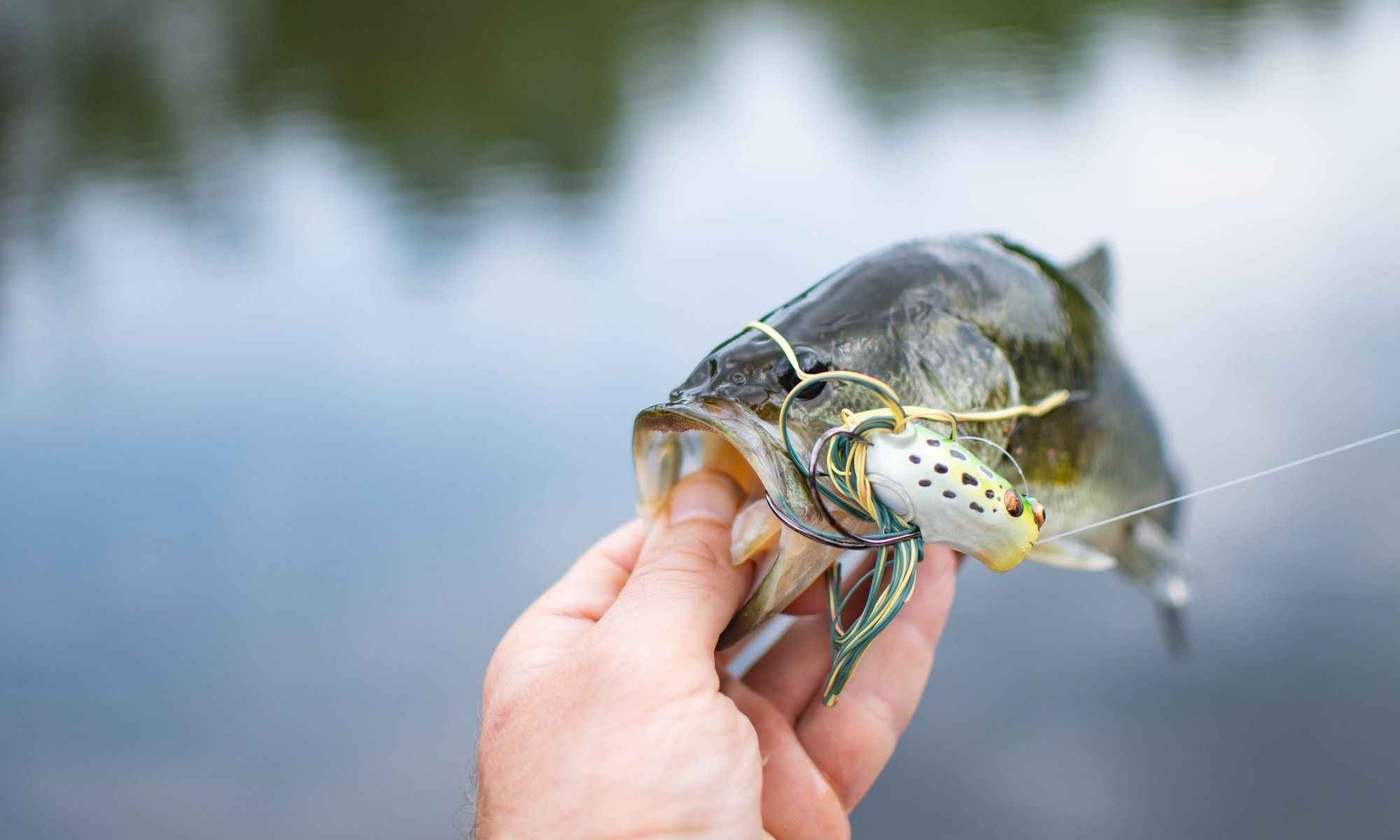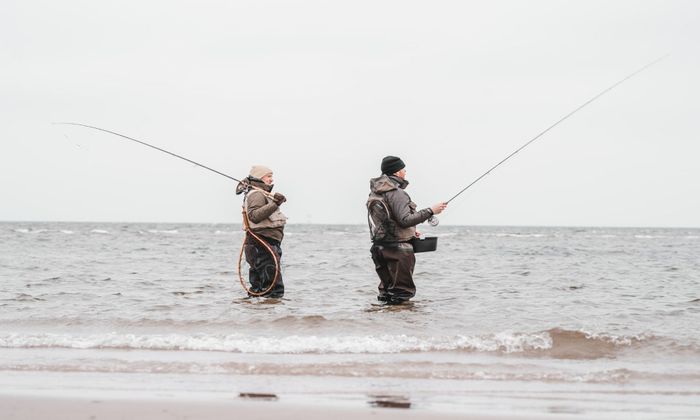Target Smallmouth and Largemouth Bass in Winter
As popular as bass are not a lot of people catch them during winter. Here's everything you need to know when winter fishing for bass.

Bass, both largemouth and smallmouth, are one of the most sought-after game fish in North America. They’re popular enough to have their own sport made specifically for catching bass. There are a number of reasons that contribute to its popularity boiling down to its high population and widespread habitat. Bass are regularly stocked in many major lakes throughout the country, making them plentiful. A lot of times fishermen can just head out on to local canals, or lakes and start fishing for bass. Other than for logistical reasons, bass are popular for their tenacity. When fishing for bass, anglers can find that both largemouth and smallmouth bass can be tough to catch. Largemouth bass, in particular, are very heavy and can grow as large as 32”. They’re also a very territorial fish, making them very aggressive when trying to catch them. Finally, the competition for bass is high because of the many bass-specific anglers in the country, this drives up the need to catch more and even innovate in better ways to catch bass.
Despite the fervor for bass all-year round, fishing as a whole slows down during the winter season. During this season, most fish have slow metabolism and are in somewhat of a hibernation. This is also one of the reasons why fall bass fish can be very popular as they are at their fattest due to them stocking up food over winter. This, of course, translates over to winter when they have loads of food and energy stored in their body. Though many fishermen fish during winter for trout, it may be worthwhile to check out populations of bass instead. Here are some tips, tricks, and things to know when catching bass during winter.
Everything You Need to Know About Fishing For Bass in Winter
Get Winterized
The very first step with winter fishing, in general, is to come with the right gear. Winter fishing, especially in the northern parts of the United States is unbearably cold, most of the time enough to even kill someone. It is during this time that the US Coast Guard records more fishing-related incidents than the rest of the year. Because of the danger the cold can pose, there are a couple of things anglers must prepare before heading out on a trip. The worst mistake anyone can make is to underestimate the cold.

Anglers should wear layers upon layers of wool-based clothes. Never wear cotton-based clothing as they’re not as thick as wool clothes, as well as not being able to dry easily. If readily available, anglers should also invest in waterproof clothing as water sticking to clothes and seeping into them is a big problem. It’s also good to bring heating pads and portable heaters. Heating pads can be stuck in between soles and feet, palms, and even napes and foreheads.
It’s okay to over prepare for winter fishing than it is to under prepare. Layers can be taken off if it’s too hot. The same goes for both heating pads and portable heaters. Being unprepared has no easy remedy for the cold, unlike when anglers over prepare.
When to Fish

Since winter can be dangerous as well as nature in general,, being unpredictable, there’s a short window for fishermen to properly fish for bass. Most anglers agree that afternoon is the best time to catch bass. Checking the weather reports for when the day is the warmest is also a good idea. Warmer waters mean the bait fish and their predators are more active than usual. Smallmouth bass are more likely caught during a short hour window before sunrise.
It’s also good to check out the water temperatures as they’re a good measure for when fish are generally more active. Water under 40° will be the hardest to catch fish as it’s too cold for any fish to be active. Temperatures in the range of 40° to 50° are one of the best conditions to fish in. In these conditions, the water is warm enough for fish to be actively looking for prey but is cold enough for fish to still be a little bit sluggish. Anything higher than 50° is when temperatures are high enough for fish to be actively searching for bait. While northern regions won’t even touch 50°, southern areas like Florida and Texas still have warmer waters that are great for regular fishing.
Where to Find Bass
One of the most unique experiences when going out fishing is probably having to fish on frozen lakes or rivers. Being able to walk on ice gives a bigger sense of freedom; even more so than when fishing on a boat. Of course, precaution needs to be taken as water doesn’t freeze evenly. The last thing an angler will ever want is to fall through ice. However, when talking about ice fishing advantages, being able to use a fish finder GPS is probably the best. In general, bass like to hide in cover like weed, rocks, and debris. This is especially true during winter when bass are less active. Keep a lookout for water clarity as baitfish depth is reliant on it. Dirtier waters mean baitfish are more active in shallow waters, while conversely clearer waters have them deeper into the water.
Using live bait is also recommended during this time as bait like crawfish and shad can sometimes die out in the water due to the cold. Deploying umbrella rigs that imitate schools of fish also work well during this time. Jigs in particular are some of the most popular artificial lures fishermen use in winter. Hair and football-head jigs, in particular, work well against winter bass. Since the latter imitates crawfish well, it’s best to use the same color as the real crawfish in the region. Otherwise, metal baits like spoons and blade baits as well as soft-plastic baits, perform just as well. With the latter often being paired with a drop-shot rig.

Patience Is Key
Despite having a lot of tips and tricks that can be used to help anglers out when fishing for bass in winter, these aren’t a sure-fire way of catching them. Remember that fish aren’t as active during this time and the main battle really isn’t reeling them in but making them think that they’re getting more nutrients by taking the bite than expending the energy to travel to the lure. Anglers should expect less bites during the winter compared to other seasons. The pay off, however, is that fish during this time are at their heaviest making for some record-breaking catches.


